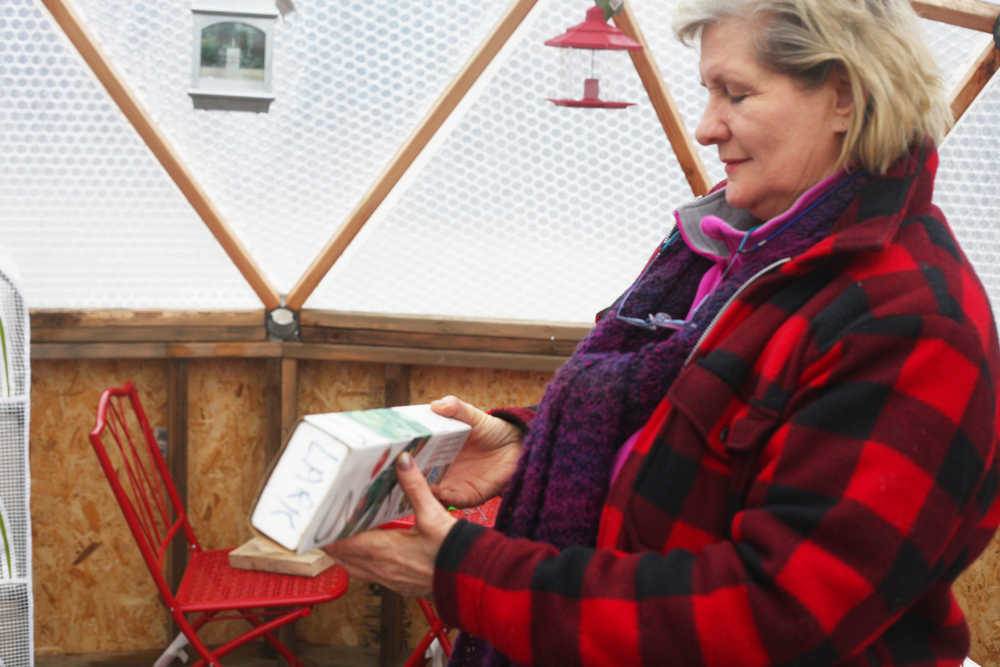Kenai Peninsula growers now have the option to grow year round.
Arctic domes, reminiscent of their close Geodesic dome cousins, “mirror the shape of the earth,” utilizing 30 percent more radiant heat than a rectangular structure is able to, said Kenai resident Lark Ticen.
Ticen’s 20-foot wide Arctic dome sits on the edge of her Kenai property. While snow fell outside the hulking frame, water was dripping in thick blobs from the ceiling, saturating the already thawed soil floor. She will begin planting within the next three weeks.
“I can hardly wait. I am just as excited as can be,” Ticen. “I can’t wait to get started in here.”
Ticen is one of eight Kenai Peninsula residents cultivating nurseries in Arctic domes. Her .17-mil Polykeder cover will allow her to produce throughout all of next winter, she said.
The convex building can withstand 150 mile-per-hour winds, hold 50 pounds of snow per square foot, and each added layer of plastic cover increases the climate zone by one, Ticen said.
James Freed, who is now located just outside of Anchorage, created the domes. His two original structures are situated in Tok, where he came up with the design, and produce crops year round.
Nationally, Freed is the only certified dome supplier and builder for the National Resources Conservation Service’s Seasonal High Tunnel Initiative System for Crops, which helps approved growers supplement the cost of the structure.
Previously a carpenter, Freed injured his shoulder and came up with the concept during his recovery period. Installing the domes has become a second career.
“I tell people I literally fell into it,” Freed said.
Demand is just manageable right now, Freed said. Currently eight more domes have been contracted for construction on the Kenai Peninsula alone, and 15 more will sign through NRCS by the end of the year, he said.
Ticen paid for her 20-foot dome out of pocket.
“I couldn’t wait for NRCS to get back to me,” Ticen said. “I wanted it now, so at least I can get started in it.”
Eventually Ticen plans to expand her operation to include a 60-foot dome that will be connected via tunnel to her original. The second building she will work with through the high tunnel program, she said.
Strolling from one side of her dome to the other she points out the turnips that stayed green all winter, and a purple perennial blooming haphazardly in a bulbous pot.
Freed in turn has plans to spread his business to the Lower 48. He is working to open locations in Richmond, Virginia and Ashland, Oregon.
Four cover options that vary in thickness available for interested parties, Freed said.
The cost out of pocket can range between $2,000-$10,000 depending on the size of the dome and the preferred cover, Ticen said.
“There is nothing better than growing up on a farm or in a garden,” Ticen said. “By my estimation at least.”
Reach Kelly Sullivan at kelly.sullivan@peninsulaclarion.com.

